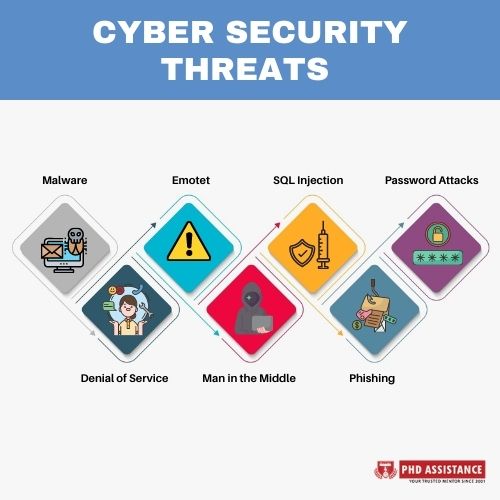views
Computer systems are constantly protected against various cyberthreats by professionals in cyber security. Every day, private systems and enterprises are the targets of cyberattacks, whose variety has rapidly expanded. There are two categories of businesses, according to former Cisco CEO John Chambers: those that have been hacked and those who are still unaware that they’ve been attacked (Cisco, 2021).
Cyberattacks can have a variety of purposes. There are two. Cyber criminals may take a system offline and demand money to make it functional again. More complex than ever, ransomware is an assault that demands payment to unlock in order to restore services.
To improve cyber security, it is essential to monitor changing and more frequent cyberattacks. An online cyber security master’s degree may be quite helpful for workers working to expand their understanding of dangers and cyber security information. Graduates of the online Master of Science in Cyber Security programme at the University of North Dakota may anticipate acquiring a thorough and sophisticated knowledge of cyber-attack techniques.
What Is a Cyber Security Threat?
Any potential malicious attack that aims to gain unauthorised access to data, interfere with digital activities, or contaminate information is referred to as a cyber security threat. Cyber threats may come from a variety of sources, including corporate espionage, hacktivists, terrorist organisations, adversarial nation-states, criminal organisations, lone hackers, and aggrieved individuals.

The following categories of cyber security dangers should be thoroughly understood by cyber security professionals.
Malware
Malware, which includes spyware, viruses, ransomware, and worms, is harmful software. When a user clicks on a malicious link or attachment, harmful software is installed, and malware is triggered. According to Cisco, once triggered, malware can:
- preventing access to important network components (ransomware)
- Install more malicious software.
- Collect data secretly by sending data from the storage device (spyware)
- Individual components can be harmed, rendering the system useless.
Denial of Service
A cyber-attack known as a denial of service (DoS) bombards a computer or network with requests, preventing it from responding. The same technique is accomplished via a distributed DoS (DDoS), except the assault comes from a computer network. Flood attacks are frequently used by cyber attackers to disrupt the “handshake” procedure and do a DoS. There are several other methods that may be employed, and some cybercriminals make use of networks being down to conduct additional attacks (Li & Liu, 2021).
Emotet
Emotet is described as “an sophisticated, modular banking Trojan that primarily serves as a downloader or dropper of other banking Trojans” by the Cybersecurity and Infrastructure Security Agency (CISA). Emotet is still among the priciest and most harmful spyware.
SQL Injection
A specific kind of cyberattack called a Structured Query Language (SQL) injection happens when malicious code is inserted into a server that supports SQL. The server divulges information when infected. Simply typing the malicious code into a search box on a susceptible website can submit it.
Phishing
Phishing attacks employ fake correspondence, such an email, to con the recipient into opening it and following the instructions contained therein, like entering a credit card information. According to Cisco, the intention is to steal personal information like credit card numbers and login credentials or to infect the victim’s computer with malware.
Therefore, to safeguard their operations and data, businesses and government bodies require the highest level of cyber security. For cyber security specialists, it is crucial to comprehend how to handle the most recent, changing cyber threats.
At phd assistance, Our professional experts always stive to give the best results in assisting the PhD scholars











